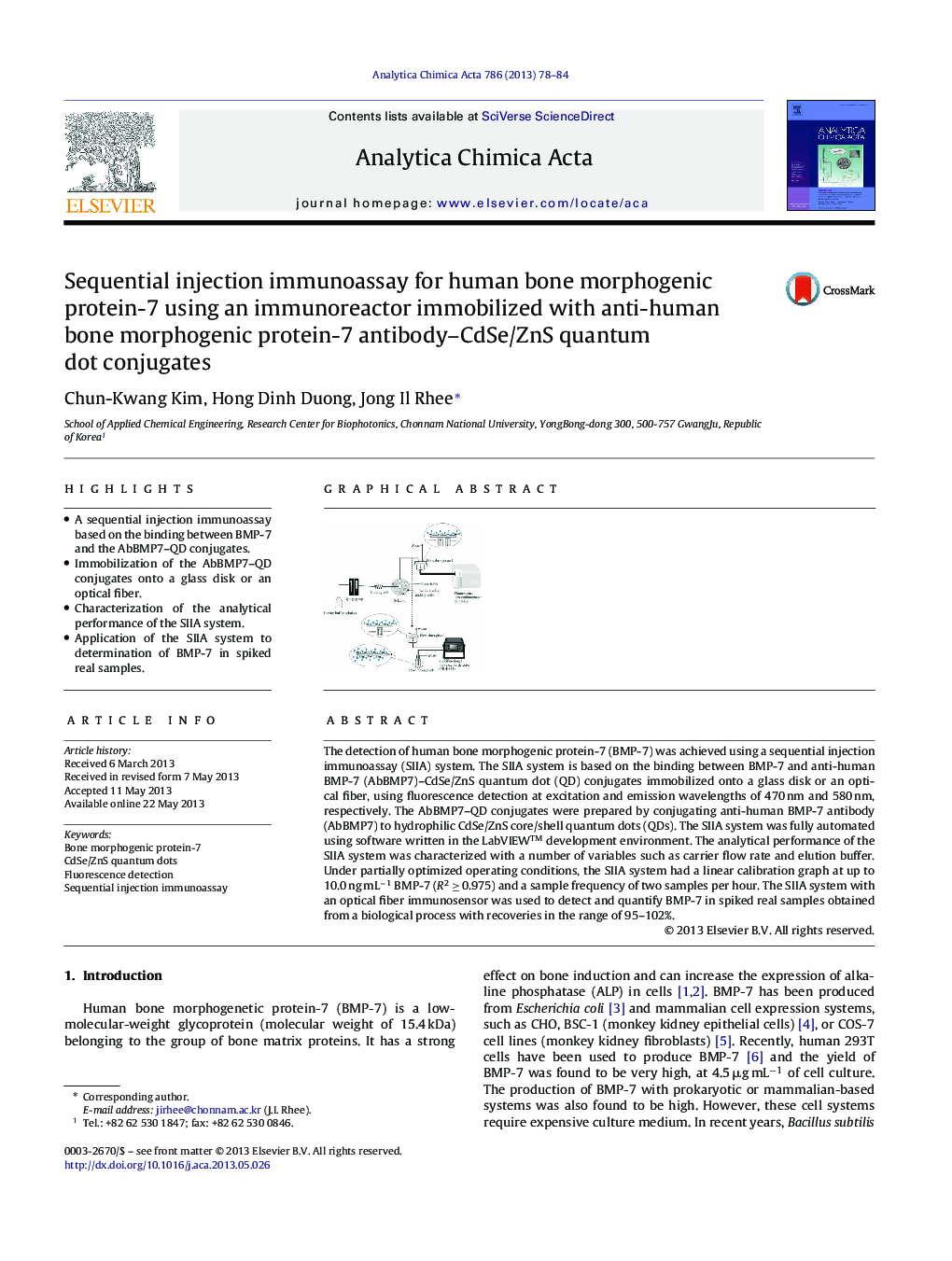| Article ID | Journal | Published Year | Pages | File Type |
|---|---|---|---|---|
| 1164691 | Analytica Chimica Acta | 2013 | 7 Pages |
•A sequential injection immunoassay based on the binding between BMP-7 and the AbBMP7–QD conjugates.•Immobilization of the AbBMP7–QD conjugates onto a glass disk or an optical fiber.•Characterization of the analytical performance of the SIIA system.•Application of the SIIA system to determination of BMP-7 in spiked real samples.
The detection of human bone morphogenic protein-7 (BMP-7) was achieved using a sequential injection immunoassay (SIIA) system. The SIIA system is based on the binding between BMP-7 and anti-human BMP-7 (AbBMP7)–CdSe/ZnS quantum dot (QD) conjugates immobilized onto a glass disk or an optical fiber, using fluorescence detection at excitation and emission wavelengths of 470 nm and 580 nm, respectively. The AbBMP7–QD conjugates were prepared by conjugating anti-human BMP-7 antibody (AbBMP7) to hydrophilic CdSe/ZnS core/shell quantum dots (QDs). The SIIA system was fully automated using software written in the LabVIEW™ development environment. The analytical performance of the SIIA system was characterized with a number of variables such as carrier flow rate and elution buffer. Under partially optimized operating conditions, the SIIA system had a linear calibration graph at up to 10.0 ng mL−1 BMP-7 (R2 ≥ 0.975) and a sample frequency of two samples per hour. The SIIA system with an optical fiber immunosensor was used to detect and quantify BMP-7 in spiked real samples obtained from a biological process with recoveries in the range of 95–102%.
Graphical abstractFigure optionsDownload full-size imageDownload as PowerPoint slide
